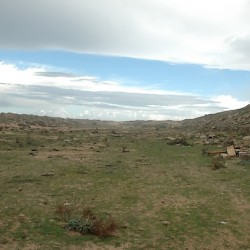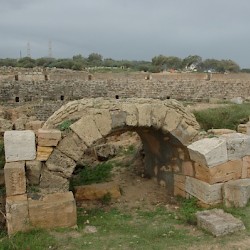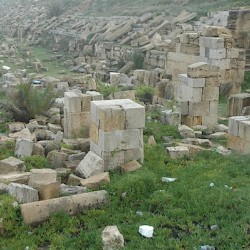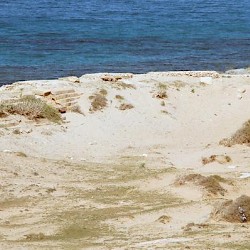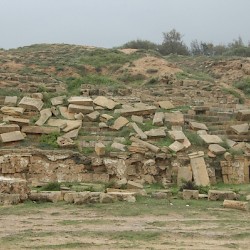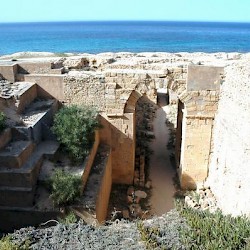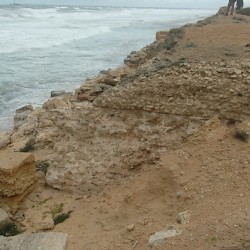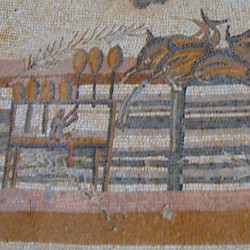Lepcis Magna, Circus
Q2844413Lepcis Magna: Phoenician colony, later part of the Carthaginian empire, the kingdom of Massinissa, and the Roman empire. Its most famous son was the emperor Septimius Severus (r.193-211).
Circus
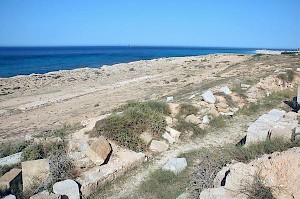
To the southeast of their city, the Lepcitanians built their circus or hippodrome, which measures about 100 x 450 m. The site, a flat area along the beach, not far from the Amphitheater, must have been in use for chariot races earlier, and it is likely that visitors' seats had already been cut into the rocks when, in 162 CE, starting gates (carceres) were added.
At the same time, the stands along the sea were built, probably replacing a wooden structure. About 20,000 to 25,000 people could watch the games from the eleven rows of official seats, but if one climbed to the Amphitheater, one could also catch a glimpse, as the first photo, which is taken from that point, shows.
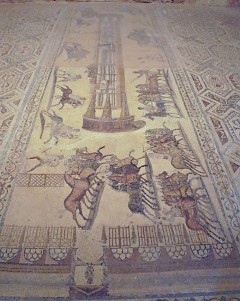
At the spina (the median strip), five water basins with fountains were added, a type of decoration otherwise only known from Rome's Circus Maximus, fitting the "dolphins" on the corners, which indicated how many laps the charioteers still had to cover.
The mosaic to the right, found in the Villa Selene, probably represents the hippodrome of Lepcis Magna. In front, you can see the starting boxes, with open doors: the race has begun. There are many chariots and horses, and you can see the spina, decorated with all kinds of monuments. The Circus of Lepcis Magna is one of the largest we know of.
Between the starting gates and the Amphitheater is the big hole in the ground that is shown on the two last photos. It may be a natural depression that was later used as a quarry, and was still later used to gather charioteers before the races in the Circus, and to prepare wild animals or gladiators for the games in the Amphitheater.
